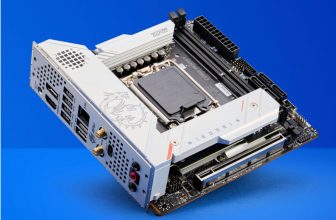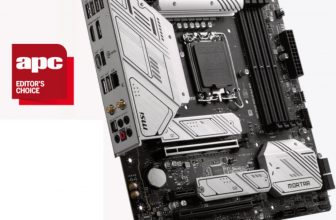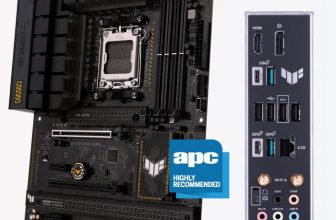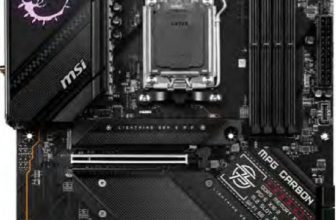Asus Rog Maximus Z690 Apex Review
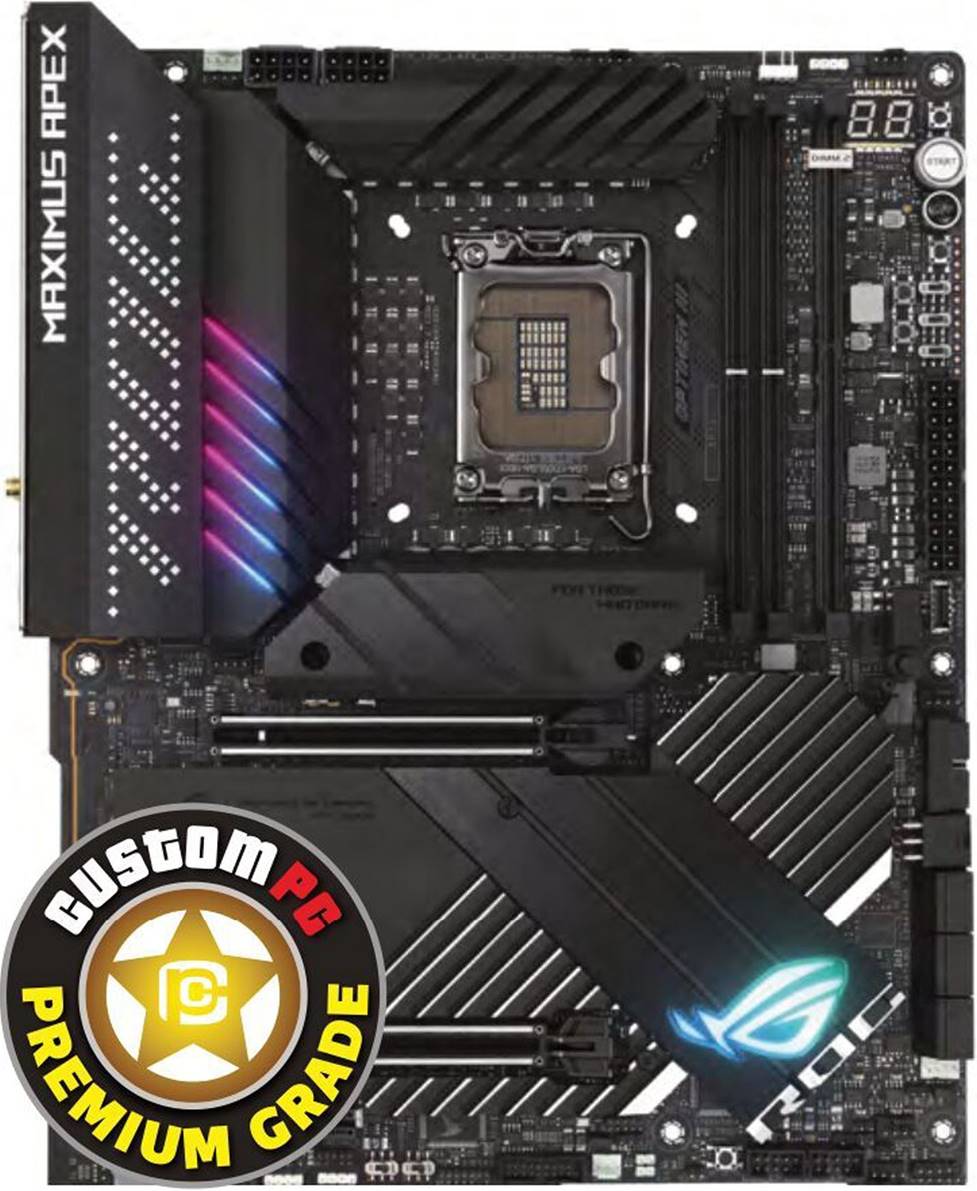
While the Asus ROG Maximus Z690 Apex has an eye-watering price tag, it’s beautifully crafted and dripping with features. The most prominent of them is an extruded aluminium heatsink spelling ROG on the bottom-right corner of the PCB. Read our Asus Rog Maximus Z690 Apex Review.
CPU socket Intel LGA1700
Memory support 2 slots: max 128GB DDRS (up to 6600MHz)
Expansion slots Two 16x PCI-E 5, one 4x PCI-E 3, one 1x PCI-E 3
Sound 8-channel ROG SupremeFX ALC4080
Networking 1 x Intel 2.5 Gigabit LAN, 802.11ax Wi-Fi
Cooling Nine 4-pin fan headers, VRM heatsinks, M.2 heatsinks
Ports 6 x SATA 6Gbps, 1 x M.2 PCI-E 5,4 x M.2 PCI-E 4, 5 x USB 3.1 Type-A, 4 x USB 3,1 x USB 3.1 Type-C, 1 x USB 3.1 Type-C header, 1 x LAN, 3 x surround audio out
Dimensions (mm) 305 x 244
This section forms part of a massive heatsink that, rather strangely, only cools one PCI-E 4 M.2 port, and there are just two of these ports on the PCB in total.
While they sport Asus’ new tool-free latches, which remove the need to deal with tiny, fiddly screws, the other boards have more M.2 ports on their PCBs. Thankfully, Asus also includes a dual M.2 port expansion card with an even bigger heatsink and a PCI-E 5 M.2 port, albeit with no PCI-E 5 SSDs available yet to enable it to stretch its legs.
This card comes in addition to a DIMM.2 vertical card next to the memory slots, which houses a third pair of PCI-E 4 M.2 slots. The ports on the PCB are cooled on both sides, but the expansion card offered the lowest M.2 SSD temperature, at just 55°C during our stress test. Lavish cooling is also provided for the 105A teamed 24-phase power delivery system too, with a trio of large heatsinks connected using a heatpipe.
There’s a generous count of nine fan headers as well, along with watercooling flow sensors and temperature sensors that can pair up with Asus’ EFI or Al Suite software to control your fans using coolant temperature. The Apex is very much geared towards custom water cooling and extreme overclocking, with voltage readout points, slow mode and LN2 switches to name just a few features, although the board has shed two memory slots in order to accommodate the extra features.
Another of our favourite features is the PCI-E latch release. This sits next to the USB Type-C header, and pressing its button will release your graphics card – that’s particularly useful since the heatsinks severely limit access to the slot once it’s occupied. There are plenty of USB ports on the I/O panel too, as well as 2.5 Gigabit Ethernet and 802.11ax Wi-Fi. There’s no Thunderbolt 4 support, but you can at least output up to 60W from the front panel USB Type-C header by hooking up a spare 6-pin PCI-E power connector to the port on the motherboard.
Overclocking was simple, with our Core i5-12600K only needing the default loadline calibration set in addition to a vcore of 1.38 V to hit 5GHz on the P-Cores and 4GHz on the E-Cores. This saw the Cinebench R23 multi threaded score rise from 17,383 to 19,349.The Apex also has excellent audio, with a dynamic range of 118dBA and noise level of -118dBA, courtesy of the ROG SupremeFX ALC4080 codec and Savitech SV3H712 amplifier.
On the downside, there are currently some compatibility problems with Asus’ motherboard software and Windows 11, including Fan Xpert and its Armory Crate installer software.
Conclusion
An all-round excellent performer, equipped with a fantastically premium design and oodles of features, the Asus ROG Maximus Z690 Apex is easily the most desirable board here, even if you won’t be delving into extreme overclocking. The price is undeniably hideous, but if you can afford it, you won’t be disappointed.
VERDICT
When you purchase through links on our site, I may earn an affiliate commission. Here’s how it works.





